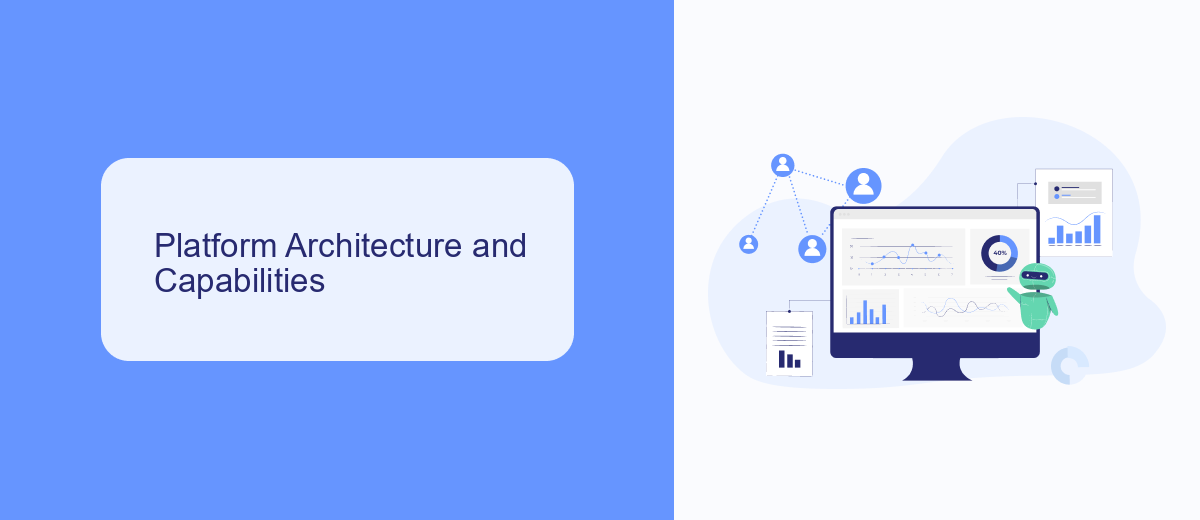In today's fast-paced digital landscape, businesses are constantly seeking efficient and scalable solutions to streamline their operations. Two prominent platforms that have gained significant attention are MuleSoft and Appian. While both offer powerful tools for integration and automation, they cater to different needs and use cases. This article delves into the key differences and advantages of MuleSoft and Appian to help you make an informed choice.
Introduction
In today's rapidly evolving business environment, the demand for efficient integration and automation solutions has never been higher. Companies seek platforms that can seamlessly connect their various applications, streamline workflows, and enhance productivity. Two prominent players in this space are MuleSoft and Appian. Both platforms offer unique features and capabilities that cater to different business needs.
- MuleSoft: Known for its robust integration capabilities, MuleSoft allows businesses to connect any application, data, or device with ease.
- Appian: A leader in low-code automation, Appian helps organizations build powerful applications quickly and efficiently.
When comparing MuleSoft and Appian, it's essential to consider the specific requirements of your business. While MuleSoft excels in complex integrations, Appian provides a user-friendly approach to automation. Additionally, services like SaveMyLeads can further simplify the integration process by offering automated data transfer solutions, ensuring that your systems work harmoniously together. Ultimately, the choice between MuleSoft and Appian will depend on your organization's unique needs and goals.
Platform Architecture and Capabilities

MuleSoft's architecture is designed around the concept of an API-led connectivity approach, which allows for scalable and reusable integrations. The platform employs a three-layer API architecture consisting of System APIs, Process APIs, and Experience APIs. This modular structure enables organizations to decouple systems, streamline processes, and deliver a seamless user experience. MuleSoft also offers Anypoint Platform, which includes tools for designing, building, and managing APIs and integrations, ensuring robust data connectivity across various systems and applications.
Appian, on the other hand, focuses on low-code automation and rapid application development. Its architecture is built to support dynamic and flexible business processes through a visual, drag-and-drop interface. Appian's platform capabilities include comprehensive process management, case management, and integration with various enterprise systems. For integration, Appian can be complemented with services like SaveMyLeads, which facilitates easy and efficient data transfer between different applications, enhancing the overall integration capabilities of the platform. This approach ensures that businesses can quickly adapt to changing requirements and maintain agility in their operations.
Integration Scenarios and Use Cases

When comparing MuleSoft and Appian, it is essential to understand their integration scenarios and use cases. MuleSoft is renowned for its robust API-led connectivity, making it ideal for complex integrations across various systems and applications. Appian, on the other hand, excels in low-code automation and rapid application development, streamlining business processes with ease.
- Enterprise Integration: MuleSoft's Anypoint Platform allows seamless integration of legacy systems, cloud services, and SaaS applications, ensuring comprehensive data flow across the enterprise.
- Business Process Automation: Appian's low-code platform facilitates the automation of intricate business processes, reducing manual tasks and accelerating workflows.
- Customer Data Management: With services like SaveMyLeads, businesses can integrate and automate lead data from various sources into their CRM systems, enhancing customer relationship management.
- API Management: MuleSoft provides extensive API management capabilities, enabling organizations to design, deploy, and manage APIs effectively.
In conclusion, while MuleSoft offers powerful tools for extensive system integrations and API management, Appian focuses on simplifying business process automation through its low-code approach. Depending on the specific needs of your organization, either platform can be leveraged to enhance operational efficiency and drive digital transformation.
Pricing and Licensing

When comparing MuleSoft and Appian, pricing and licensing are essential factors to consider. MuleSoft offers a subscription-based pricing model, which varies depending on the number of applications and data sources integrated. The cost can escalate quickly for larger enterprises, making it crucial to evaluate your integration needs carefully.
Appian, on the other hand, provides a more straightforward pricing structure. It offers a per-user subscription model, which can be more predictable and scalable for organizations of varying sizes. This model is particularly beneficial for businesses looking to manage costs effectively as they grow.
- MuleSoft: Subscription-based pricing, complex for large enterprises
- Appian: Per-user subscription, predictable and scalable
Both platforms offer robust capabilities, but the choice between them may come down to how their pricing models align with your business needs. Additionally, services like SaveMyLeads can help streamline your integration processes, potentially reducing the overall cost and complexity associated with these platforms.
Market Share and Adoption
MuleSoft and Appian are both significant players in the integration and automation market, each with its unique strengths and user base. MuleSoft, a leader in the integration platform as a service (iPaaS) sector, is widely adopted by enterprises looking for robust API management and integration solutions. Its Anypoint Platform is renowned for its flexibility and scalability, making it a preferred choice for large organizations with complex integration needs. Appian, on the other hand, shines in the low-code automation space, enabling businesses to rapidly develop applications and automate workflows with minimal coding effort. This has led to its widespread adoption among companies seeking to accelerate their digital transformation initiatives.
Despite their differences, both platforms have seen significant growth and adoption in recent years. MuleSoft's strong market presence is bolstered by its acquisition by Salesforce, which has expanded its reach and capabilities. Appian continues to grow its market share by focusing on ease of use and speed of deployment, attracting a diverse range of industries. Additionally, services like SaveMyLeads complement these platforms by providing seamless integration solutions, further enhancing their adoption and effectiveness in streamlining business processes.


FAQ
What are the primary differences between MuleSoft and Appian?
Can MuleSoft and Appian be used together?
Which platform is better for non-technical users?
How do MuleSoft and Appian handle scalability?
Are there any services that can help implement automation and integrations for these platforms?
Personalized responses to new clients from Facebook/Instagram. Receiving data on new orders in real time. Prompt delivery of information to all employees who are involved in lead processing. All this can be done automatically. With the SaveMyLeads service, you will be able to easily create integrations for Facebook Lead Ads and implement automation. Set up the integration once and let it do the chores every day.
